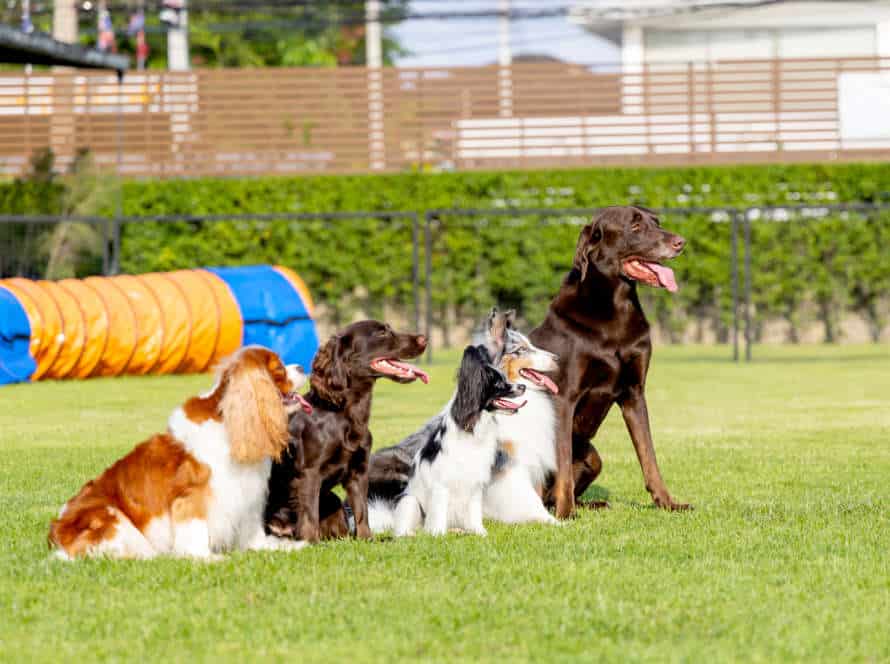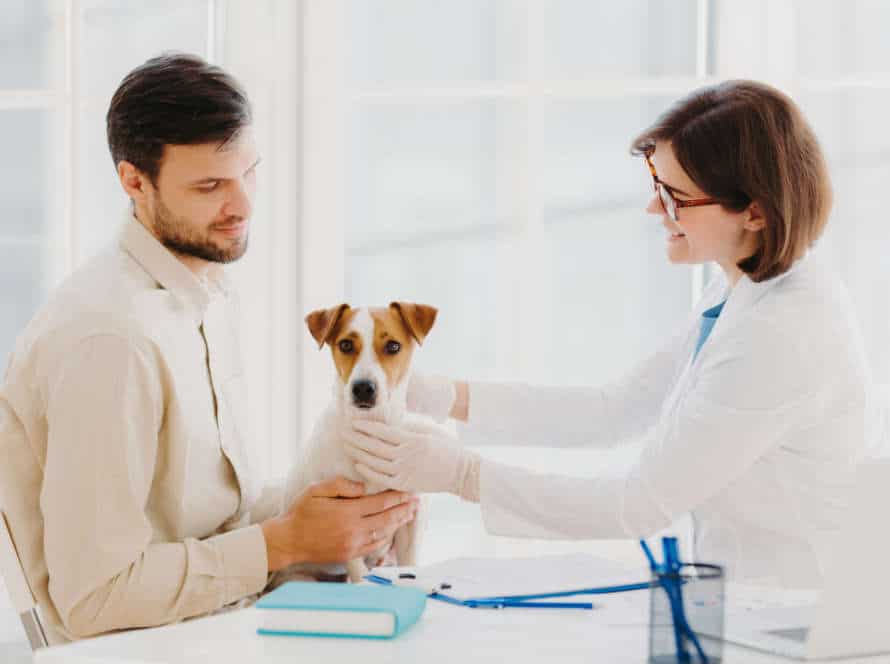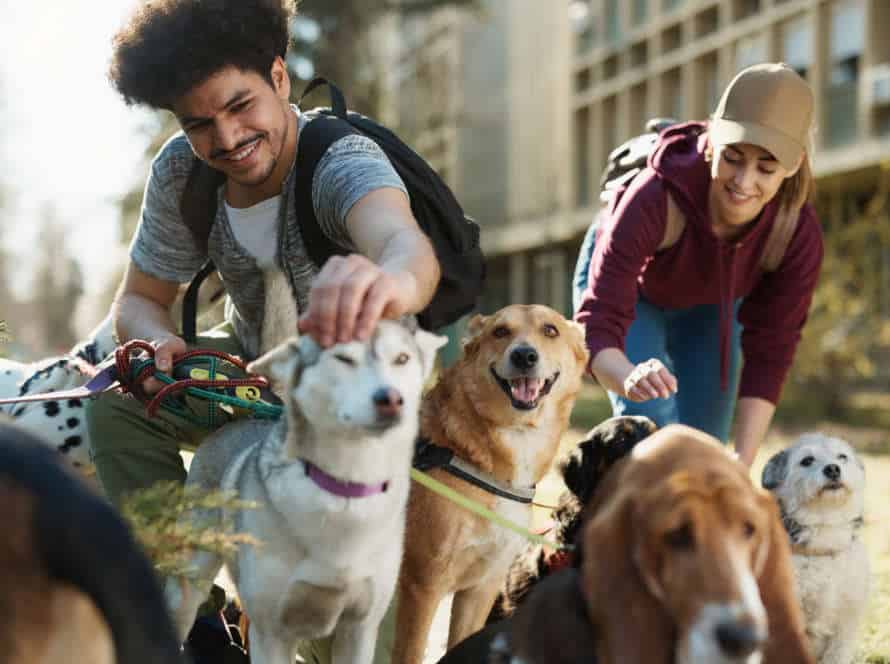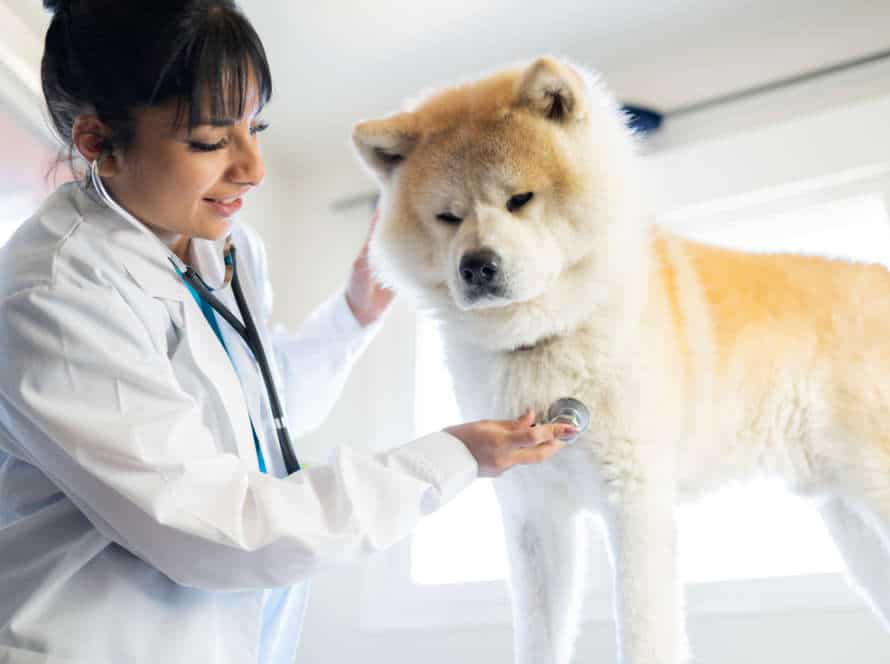How to Prepare Your Dog for Surgery
Prepare your pup for surgery with these key steps:
- Ask your vet about the surgery.
- Make time to look after your doggo after the operation.
- Follow the vet’s instructions.
- Manage recovery: rest, exercise, and good nutrition.
- Keep the incision clean.
With the right prep and care, your pup can make a full recovery.
Pre-surgery Preparations
Getting surgery is a stressful situation for any animal, including dogs. To make sure your pet has the best chances of success, it’s important to prepare them well. This means:
- Taking away food and water
- Giving emotional support
- Letting them get used to the surroundings
Let’s check out these pre-surgery preparations in more detail.
Informing Your Vet of Pre-Existing Conditions
Informing your vet of any existing conditions is essential when prepping your pooch for surgery. Not informing them can lead to complications during or after the op. Here’s what you need to know:
Pre-surgery exam: Your vet will do a thorough pre-surgery check-up. This includes going through your pup’s medical records, measuring vital signs, and running tests.
Disclose ALL conditions: It’s essential to tell your vet all medical conditions, such as allergies, heart conditions, diabetes, and any medicines your doggo is on.
Follow instructions: Your vet will give you pre-surgery instructions for your pup. This could involve not eating and drinking. Make sure to follow these to ensure a successful surgery.
Arrange ride home: After the surgery, your pup may need to stay at the vet’s overnight. Get a safe and comfortable ride home for them.
Pro Tip: Make a list of your pup’s pre-existing conditions and medicines before seeing the vet to guarantee that you don’t forget any info.
Reviewing Pre-Op Instructions for Surgery
Your four-legged friend’s surgery is coming up? Then, you need to review some vital pre-op instructions to make sure their operation is successful. Here are some tips:
- Check with the vet for any pre-surgery protocols. This might include fasting and medicine dosages.
- Prepare a relaxing, cozy place for your pup to recover after the procedure.
- Follow hygiene instructions to stop infections.
- Gather all the necessary supplies – meds, a cone collar, and special meals.
- Before surgery, cuddle and play with your pup for comfort.
Take these precautions to guarantee a smooth surgery and a speedy recovery.
Adjusting Your Dog’s Diet Prior to the Procedure
Prior to surgery, adjusting your pup’s diet is critical. Follow your vet’s directions for the best result.
Here are some diet restrictions before surgery:
- Food – No food for 8-12 hours prior. Fasting reduces the risk of vomiting or aspiration.
- Water – Keep your pup hydrated until a few hours before the procedure.
- Medications – Some meds, like blood thinners, anti-inflammatories, or herbs, may cause bleeding or other issues. Discontinue if your vet directs you.
Be sure to follow instructions and report any worries to your vet. This will help keep your pup healthy.
Preparing Your Home
Before your pup’s surgical procedure at the vet, be sure to get your home ready! Have bedding ready and easily accessible to food and water. Include lots of toys and chews to keep your pup entertained during the recovery. Preparing in advance will make sure your pup is content when they come home.
Creating A Recovery Zone
Creating a recovery zone for your pup is essential when prepping them for surgery. A safe and cozy spot for them to rest and heal is a must! Here’s some advice:
- Choose a confined, quiet space in your home. Away from busy and loud areas.
- Set up a comfortable, clean bed with soft and supportive bedding.
- Keep food, water bowls, and any medications or supplements prescribed by your vet close.
- Let your pup have easy access to a potty area. That way, no accidents or discomfort.
- Block your pup from jumping or climbing stairs with baby gates or other barriers.
- Give lots of love and attention. So they feel safe and secure during recovery.
Placing Necessary Supplies Within Reach
Prep your home for your pup’s surgery recovery – make sure to have necessary supplies within reach! Set up a special area with all the essentials. Here’s what to do:
- Find a comfy, peaceful & clean spot in your home
- Away from noise & busy places.
- Put a bed or blanket in the spot.
- Keep medications, water, food, bowls, extra blankets & towels nearby.
- Put down a non-slip mat or rug if your dog struggles to stand/walk.
- Block off any stairs or other obstacles.
These small changes to your home will make a huge difference to your pup’s recovery – comfort them in a secure & supportive atmosphere!
Fostering A Calm & Comfortable Environment
It’s essential to ready your home for your pup’s surgery to guarantee a tranquil, pleasant recuperation. Here’s how to make a peaceful atmosphere for your dog:
- Discover a silent, comfortable spot in your home for them to recover. Make sure there are no sharp objects, stairs, or other hazards.
- Make a comfortable place to sleep with soft sheets and covers.
- Use pheromone diffusers/sprays to produce calming aromas to promote relaxation.
- Play serene music/white noise to muffle any outside noises, making a calming atmosphere.
- Keep your pup amused with safe, non-strenuous activities such as puzzle games or slow-feeders.
By taking these simple steps, your pup will feel secure and comfortable while healing, resulting in a successful, swift recovery.
Prepping Your Dog
Get ready for your pup’s surgery! There are a few steps you can take to have a successful outcome. Prep your doggo properly beforehand to reduce the stress. Here, we’ll talk about each step to make sure they have a good experience.
- Consult with your veterinarian to understand the surgery process and what you can do to prepare your dog.
- Fast your dog for at least 12 hours before the surgery to prevent any complications during the anesthesia process.
- Make sure to keep your dog calm and comfortable leading up to the surgery, providing familiar surroundings and reducing any sudden movements.
- Prepare a comfortable recovery space for your dog to rest after surgery, with enough space to move around and access to water and food.
- Follow your veterinarian’s post-surgery instructions for medication, wound care and follow-up appointments to ensure a smooth recovery.
Addressing Anxiety and Worry
Preparing your pup for surgery can be a stress-filled situation for both of you. Here’s how to help ease the worry:
- Familiarize Fido With the Vets: Take your dog to the hospital a few times beforehand. Let them get used to the smells, sounds, and staff.
- Provide Comfort and Support: Give lots of attention and love before the surgery. Use a gentle tone to let them know everything will be alright.
- Look Into Medication: Talk to your vet about medications to help your dog stay calm before the procedure.
- Follow Pre-Op Instructions: Make sure to follow every pre-op instruction from your vet. This will help make sure the surgery goes well.
Getting Your Dog Comfortable with a Crate
Getting your pup comfy with a crate is essential for crate training. It offers a secure spot for them to chill and snooze. Here’s how to do it:
- Introduce the crate: Let your pooch sniff and explore the crate. Place familiar items like toys or blankets inside to make it more inviting.
- Positive Association: Encourage them to enter the crate with their favorite treats or toys. Praise them when they go inside. Gradually increase the time they spend in there.
- Encourage voluntary crating: Slowly get your pup used to being in the crate. Start with short periods, then gradually increase the length of time.
- Crate for sleeping: When your pup is content in the crate, use it for sleeping at night. Reward them for good behavior.
With time, your dog will link the crate to positive experiences and feel safe in their space.
Speeding Up Potty Training
Speed up your pooch’s potty training with consistency, patience, and positive reinforcement! Here’s how:
- Create a potty schedule and stick to it. This includes consistent meal times, water breaks, and potty breaks.
- Give your pup a treat and praise them right away when they go potty in the assigned spot.
- Limit your dog’s access to the house and gradually widen their roaming area as they become more reliable.
- Keep an eye out for signs that they need to go such as whining, sniffing, or circling.
- Be patient and never scold or punish them for accidents.
With these tips, your canine will learn to use the bathroom outside faster than you’d imagine!
What To Expect After Surgery
Be ready for when your pup is back from the vet. Medicine may be necessary and you ought to know about any potential side effects. To make your dog feel safe, create a comfortable space. Let’s take a closer look at what to expect post-surgery.
The First Day Home
Bringing your furry pal home after surgery may be tough for both you and your pup. Here’s what to anticipate on the very first day back and how to get your dog ready for surgery.
- Check if your dog is steady and conscious prior to taking them home. They may be groggy, disoriented and confused from the procedure and the anesthesia.
- Give your dog a calm and peaceful spot to rest and heal, away from any noise and other pets or children.
- Keep an eye out for any signs of discomfort, pain, or strange behavior. Give any pain medicines and stick to any instructions given by the vet or nurse.
- Serve small amounts of water and a plain diet, like boiled chicken and rice, so no digestive issues or throwing up happens.
- Be observant of the incision area and follow any wound care instructions given by the vet. Watch out for any indications of infection, like redness, discharge, or swelling.
- Supply attention, love, and cuddles to assist calm and comfort your dog during this testing time.
The Road to Recovery
Post surgery, your pup will need lots of peace, care, and affection for a speedy and successful healing. Here’s what to look out for and tips to ready your dog for the operation:
- Expect fatigue and drowsiness, uneasiness, and a decrease in appetite in the initial few days post-op. Also, be prepared to witness pain, inflammation, redness, or discharge at the surgical site.
- To prepare for the surgery, heed your vet’s pre-surgery guidelines rigorously, including any dietary limitations or drug instructions. Also, confirm that your puppy’s vaccinations and parasite protection are up to date.
- During recovery, restrict your pup’s activity and give them a warm and cozy spot to relax. Follow all the prescribed medication directions and keep an eye on their behavior and hunger.
- Keep your pup’s incision point clean and dry, and do not bathe or swim till your veterinarian says it’s alright.
Pro tip: Always follow your vet’s instructions carefully and don’t hesitate to contact them if you have any queries or worries. Your pet’s health and recovery depend on your attentive care.
Follow-Up Instructions and Monitoring
Once your pup has their surgery, it’s vital to heed the vet’s instructions for a seamless recovery. Here are some must-know post-op care tips:
- Make sure your pup has a peaceful and cozy spot to recuperate.
- Keep an eye on their behaviour and advise the vet of any strange changes.
- Give them their meds as prescribed and watch out for any adverse reactions.
- Restrict movement and exercise for a few days after surgery.
- Check the incision area frequently for any signs of infection or swelling.
- Ensure they get enough food and fluids.
By following these steps, your pup should heal rapidly and easily. If you have any questions, don’t hesitate to contact the vet.
Frequently Asked Questions
1. How do I prepare my dog for surgery?
Answer: The best way to prepare your dog for surgery is by following your vet’s instructions closely. This can include having your dog fast before the surgery, providing any necessary medications before and after the procedure, and making sure to keep your dog calm and comfortable in the days leading up to the surgery.
2. Can I feed my dog before surgery?
Answer: In most cases, your vet will ask you to fast your dog for at least 12 hours before surgery. This helps to reduce the risk of complications during the procedure, such as vomiting or aspiration pneumonia. However, your vet will give you specific instructions based on your dog’s individual needs.
3. How long does it take for a dog to recover from surgery?
Answer: Recovery time can vary depending on the type of surgery and the age and overall health of the dog. In general, most dogs will need a few days of rest and quiet activity after surgery, with adequate pain medication and plenty of water and food. More complex surgeries or older dogs may take longer to recover, and your vet can provide more specific guidance based on your dog’s individual case.
4. Can I leave my dog alone after surgery?
Answer: It is important to provide close supervision and care for your dog after surgery, especially in the first few hours and days following the procedure. Your vet may recommend keeping your dog in a quiet, comfortable space where he can rest and be observed closely, and you should be available to provide water, food, and medication as needed. Leaving your dog alone for extended periods of time may lead to complications or delays in the recovery process.
5. Can I play with my dog after surgery?
Answer: Your vet will likely recommend limiting your dog’s activity in the days following surgery, to allow the body to heal and reduce the risk of injury or complication. Gentle exercise and play may be introduced gradually over time, but it is important to follow your vet’s guidance and avoid overexerting your dog during the recovery period.
6. What signs of complication should I watch for after surgery?
Answer: Complications can occur after any surgery, and it is important to monitor your dog closely in the days and weeks following the procedure. Signs of complications may include vomiting, diarrhea, lethargy, swelling or discharge from the surgical site, and difficulty breathing. If you notice any of these signs or have concerns about your dog’s recovery, contact your vet immediately.







